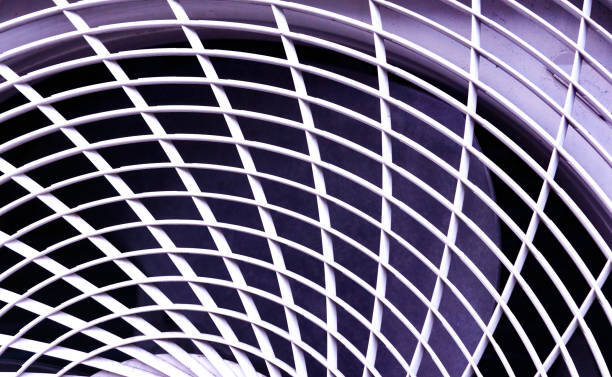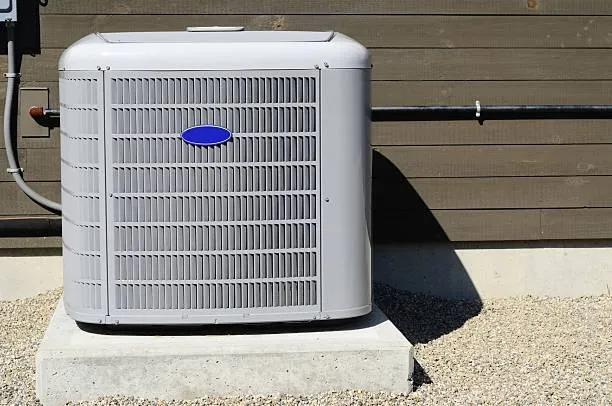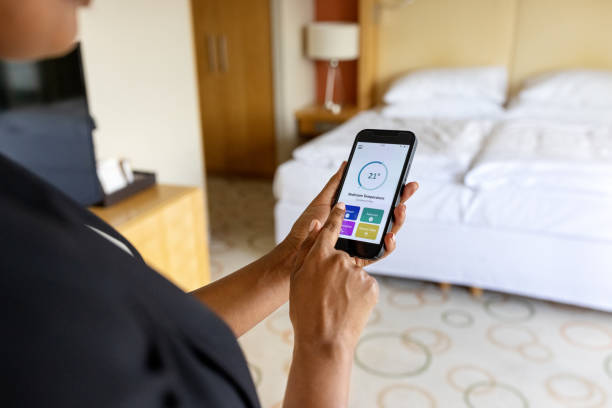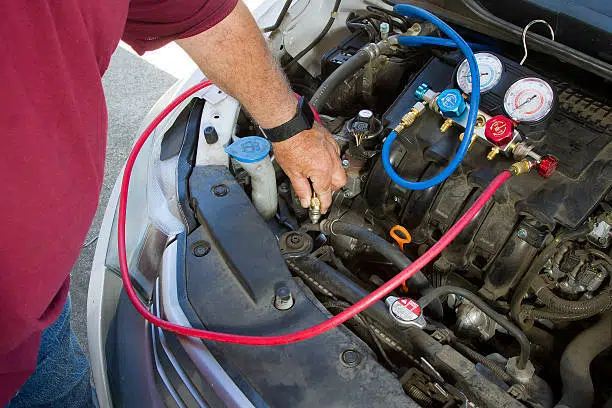
Table of Contents
Welcome to our comprehensive guide on Fan Coil Units (FCUs), a key component in HVAC systems that you might encounter in residential, commercial, or industrial buildings. Whether you’re a property owner looking to upgrade your HVAC system or a professional in the field, understanding FCUs is crucial. This guide aims to demystify what FCUs are, how they work, and why they might be the right choice for your heating and cooling needs.
What is a Fan Coil Unit?
So, what exactly is a fan coil unit? In simple terms, a fan coil unit is a device that uses a fan and a coil to either heat or cool a room. These units are versatile and can be integrated into various HVAC systems to regulate the temperature of a space. Fan coil units are typically connected to a central chiller or boiler, providing the flexibility to handle different temperature requirements in separate zones of a building.
Main Components of a Fan Coil Unit
To get a better grasp of how fan coil units work, it’s essential to understand their main components:
- Fan
- Description and functions: The fan circulates air over the coil, which either heats or cools the air before it enters the room.
- Types: Centrifugal fans are known for their high efficiency and quiet operation, making them ideal for indoor environments.
- Coil
- Description and functions: The coil functions as the heat exchanger. Depending on the system, it can either be a cooling coil or a heating coil.
- Types: Cooling coils typically use chilled water or refrigerant, while heating coils use hot water or electric resistance to generate heat.
- Filters
- Description and functions: Filters trap dust, debris, and other airborne particles, ensuring that the air circulated by the air handling unit is clean.
- Importance: Regular maintenance of these filters is necessary to keep the unit running efficiently and to prevent potential health issues caused by poor indoor air quality.
- Thermostats and Control Systems
- Description: Control systems, including thermostats, allow users to set and maintain desired temperatures.
- Importance: These systems range from basic manual controls to advanced programmable thermostats that can optimize energy use based on occupancy patterns and outside weather conditions.
How a Fan Coil Unit Works
Understanding the operational cycle of a fan coil unit gives insight into its effectiveness and efficiency. In a cooling cycle, chilled water or refrigerant passes through the cooling coil, absorbing heat from the air that the fan blows over it. This cooled air is then distributed throughout the room, lowering the overall temperature. Conversely, in a heating cycle, hot water or an electric heating element in the coil warms the air, which is then circulated by the fan to increase the room’s temperature.
Airflow is another critical aspect of an FCU’s operation. The design and placement of the fan and coil ensure that air flows smoothly and efficiently through the air handling unit. Proper airflow not only enhances the performance of the fan coil unit but also contributes to a consistent and comfortable indoor climate. Poor airflow can lead to uneven heating or cooling, increased energy consumption, and potential system failures.

Types of Fan Coil Units
There are various types of fan coil units, each suited to different installation requirements and space constraints:
- Ducted Fan Coil Units
- Description: Typically hidden above ceilings or behind walls, distributing air through a network of ducts.
- Applications: Ideal for large, open spaces where aesthetic considerations are important.
- Advantages and Disadvantages: Keep mechanical components out of sight but can be more challenging and costly to install due to the extensive ductwork required.
- Wall-Mounted Fan Coil Units
- Description: Installed on walls and more visible but easier to install and maintain.
- Applications: Perfect for smaller spaces or retrofitting projects where installing ductwork would be impractical.
- Cassette Fan Coil Units
- Description: Installed in the ceiling, with only the grille visible, offering a balance between aesthetics and functionality.
- Applications: Popular in commercial settings like offices and hotels, where ceiling space is often available.
- Floor-Mounted Fan Coil Units
- Description: Sit directly on the floor and typically used in spaces where wall or ceiling installations are not feasible.
- Applications: Easy to access for maintenance but can take up valuable floor space.
Advantages and Disadvantages of Using Fan Coil Units
Fan coil units offer several advantages that make them a popular choice for many HVAC applications. One of the primary benefits is their energy efficiency. Fan coil units allow for zonal heating and cooling, which means you can condition only the spaces that are in use, reducing overall energy consumption. This flexibility can lead to significant cost savings, especially in large buildings with varying occupancy patterns.
Another advantage is the ease of installation and maintenance. Compared to central air systems, fan coil units are relatively simple to install, especially in retrofit projects where adding ductwork would be cumbersome. Maintenance tasks, such as changing filters and cleaning coils, are straightforward and can be performed without specialized training.
However, fan coil units also have some disadvantages. One of the main issues is their performance limitations. Fan coil units are generally less powerful than central air systems, making them less suitable for very large or open spaces. Additionally, they can sometimes produce noise and vibrations, which might be a concern in noise-sensitive environments like bedrooms or offices. Proper installation and regular maintenance can mitigate these issues, but they are worth considering when choosing an HVAC system.
Advantages | Disadvantages |
|---|---|
Energy Efficiency:
Fan coil units allow for zonal heating and cooling, conditioning only the spaces in use, which reduces overall energy consumption and can lead to significant cost savings, especially in large buildings with varying occupancy patterns. | Performance Limitations: Generally less powerful than central air systems, making them less suitable for very large or open spaces. |
Ease of Installation:
Compared to central air systems, fan coil units are relatively simple to install, particularly in retrofit projects where adding ductwork would be cumbersome. | Noise and Vibrations: Can sometimes produce noise and vibrations, which might be a concern in noise-sensitive environments like bedrooms or offices. |
Ease of Maintenance:
Maintenance tasks, such as changing filters and cleaning coils, are straightforward and can be performed without specialized training. | Regular Maintenance Requirement: While tasks like filter replacement and coil cleaning are simple, they do require ongoing attention to maintain efficiency. |
Choosing and Installing a Fan Coil Unit
Selecting the right fan coil unit involves considering several factors:
- Power and Performance
- Assess the heating and cooling load of the space you intend to condition. This will help you determine the appropriate size and capacity of the fan coil unit.
- Noise Levels
- Noise levels are another critical factor, especially in residential or office settings where a quiet environment is essential. Look for units designed for low-noise operation, and consider their placement to minimize any potential disruptions.
- Compatibility
- Ensure that the fan coil unit you choose can integrate seamlessly with your existing chiller or boiler and that the control systems are compatible.
The installation process involves several key steps, from positioning the unit to connecting it to the building’s water or refrigerant lines and electrical system. Safety and compliance with local building codes are paramount. Professional installation is recommended to ensure the unit operates efficiently and safely. An HVAC technician can also provide guidance on proper placement and help you avoid common installation pitfalls.
Conclusion
To sum up, fan coil units are versatile, energy-efficient components of modern HVAC systems. They offer the flexibility to provide zonal heating and cooling, making them an excellent choice for various applications. By understanding their components, how they work, and the types available, you can make an informed decision about whether fan coil units are right for your needs. Remember, proper selection, installation, and maintenance are key to getting the most out of your fan coil unit and ensuring a comfortable indoor environment.
For personalized advice or professional installation and maintenance services, don’t hesitate to contact our team at HVAC Service Solutions. We’re here to help you achieve the perfect indoor climate for your home or business.
Frequent Asked Questions
1. What is a Fan Coil Unit (FCU)?
A fan coil unit (FCU) is a device that utilizes a fan and a coil to either heat or cool a room. The coil acts as a heat exchanger, transferring heat to or from the air, which is then circulated by the fan. FCUs are versatile and can be integrated into a variety of HVAC systems to provide temperature control in specific zones within a building. Typically, they are connected to a central chiller or boiler, allowing for efficient temperature management across multiple spaces. FCUs are popular in residential, commercial, and industrial settings due to their flexibility and efficiency. They can be installed in ceilings, walls, or floors, depending on the design and requirements of the space. This makes them an excellent choice for both new constructions and retrofitting projects.
2. How does a Fan Coil Unit differ from an Air Handling Unit (AHU)?
While both fan coil units (FCUs) and air handling units (AHUs) are critical components of HVAC systems, they serve different purposes and are used in different contexts. An AHU is generally larger and more complex than an FCU. It is designed to condition and circulate large volumes of air throughout a building, often through an extensive ductwork system. AHUs can control air quality by incorporating filters, humidifiers, and dehumidifiers. On the other hand, FCUs are smaller units that provide localized heating or cooling for individual rooms or zones. They are more straightforward in design, typically consisting of just a fan and a coil. While AHUs are ideal for managing the air quality and temperature of large spaces, FCUs are perfect for providing targeted climate control in specific areas.
3. What are the main components of a Fan Coil Unit?
To understand how fan coil units work, it’s essential to know their main components. The fan is responsible for circulating air over the coil, which either heats or cools the air before it is distributed into the room. Coils function as heat exchangers and can be either cooling coils, using chilled water or refrigerant, or heating coils, using hot water or electric resistance. Filters are another crucial component; they trap dust, debris, and other airborne particles to ensure that the air circulated by the FCU is clean. This helps maintain good indoor air quality and keeps the system running efficiently. Thermostats and control systems allow users to set and maintain desired temperatures, ranging from basic manual controls to advanced programmable systems that optimize energy use. Together, these components ensure the FCU operates effectively to provide a comfortable indoor environment.
4. What are the types of Fan Coil Units available?
Fan coil units come in several types, each designed to suit different installation requirements and space constraints:
- Ducted Fan Coil Units: These units are typically hidden above ceilings or behind walls, distributing air through a network of ducts. They are ideal for large, open spaces where aesthetic considerations are important. However, they can be more challenging and costly to install due to the extensive ductwork required.
- Wall-Mounted Fan Coil Units: Installed on walls, these units are more visible but easier to install and maintain. They are perfect for smaller spaces or retrofitting projects where installing ductwork would be impractical.
- Cassette Fan Coil Units: These units are installed in the ceiling, with only the grille visible, offering a balance between aesthetics and functionality. They are popular in commercial settings like offices and hotels, where ceiling space is often available.
- Floor-Mounted Fan Coil Units: Sitting directly on the floor, these units are typically used in spaces where wall or ceiling installations are not feasible. They are easy to access for maintenance but can take up valuable floor space.
Each type has its own set of advantages and is suitable for specific applications depending on the design and requirements of the building.
5. What are the advantages of using a Fan Coil Unit?
Fan coil units offer numerous advantages, making them a popular choice in various HVAC applications. One of the primary benefits is their energy efficiency. By allowing for zonal heating and cooling, FCUs enable users to condition only the spaces that are in use, significantly reducing overall energy consumption. This can lead to substantial cost savings, especially in large buildings with varying occupancy patterns. Another advantage is the ease of installation and maintenance. Compared to central air systems, FCUs are relatively simple to install, especially in retrofit projects where adding ductwork would be cumbersome. Maintenance tasks, such as changing filters and cleaning coils, are straightforward and do not require specialized training. Additionally, FCUs offer flexibility in design and can be integrated into various types of buildings, from residential homes to commercial and industrial facilities.
6. What are the disadvantages of using a Fan Coil Unit?
Despite their many benefits, fan coil units also have some disadvantages. One of the main issues is their performance limitations. FCUs are generally less powerful than central air systems, making them less suitable for very large or open spaces where consistent temperature control is critical. Additionally, they can sometimes produce noise and vibrations, which might be a concern in noise-sensitive environments such as bedrooms or offices. Proper installation and regular maintenance can help mitigate these issues, but they are worth considering when choosing an HVAC system. Another potential downside is the need for regular filter replacements and cleaning to maintain efficiency and air quality. While these maintenance tasks are relatively simple, they do require ongoing attention. Overall, it’s essential to weigh these disadvantages against the benefits to determine if FCUs are the right choice for your specific needs.
7. How do I choose the right Fan Coil Unit for my space?
Selecting the right fan coil unit involves considering several key factors to ensure optimal performance and comfort. First, assess the heating and cooling load of the space you intend to condition. This will help you determine the appropriate size and capacity of the fan coil unit needed to meet your temperature requirements. Noise levels are another critical factor, especially in residential or office settings where a quiet environment is essential. Look for units designed for low-noise operation and consider their placement to minimize any potential disruptions. Additionally, ensure that the fan coil unit you choose can integrate seamlessly with your existing chiller or boiler, and that the control systems are compatible. This will ensure smooth operation and efficient performance. Other considerations include the ease of installation, maintenance requirements, and overall cost. Consulting with an HVAC professional can help you make an informed decision based on your specific needs and circumstances.
8. How is a Fan Coil Unit installed?
The installation process for a fan coil unit involves several key steps to ensure proper operation and compliance with safety standards. First, the unit must be positioned in the optimal location, whether it’s in the ceiling, wall, or floor, to ensure efficient airflow and temperature control. Once the location is determined, the unit is connected to the building’s water or refrigerant lines and the electrical system. This step requires careful attention to ensure all connections are secure and leak-free. Proper insulation of these connections is also crucial to prevent energy loss and maintain efficiency. Safety and compliance with local building codes are paramount throughout the installation process. It’s highly recommended to have a professional HVAC technician handle the installation to ensure everything is done correctly and safely. They can also provide guidance on the best placement for the unit and help avoid common installation pitfalls that could affect performance and longevity.
9. What maintenance is required for a Fan Coil Unit?
Regular maintenance is essential to keep your fan coil unit running efficiently and prolong its lifespan. Routine tasks include checking and replacing filters to ensure clean air circulation and prevent blockages that could reduce airflow. Cleaning the coils and fans is also crucial to maintain efficient heat exchange and prevent issues such as reduced cooling or heating capacity. Inspecting the unit for any signs of wear or damage can help identify potential problems early, allowing for timely repairs and avoiding costly breakdowns. It’s important to follow the manufacturer’s recommended maintenance schedule and procedures to keep the unit in top condition. While some maintenance tasks can be performed by the user, others may require professional assistance. Regular servicing by a professional HVAC technician can help ensure all components are functioning correctly and can extend the life of your fan coil unit.
10. Where can I get professional help for Fan Coil Units?
For personalized advice, professional installation, and maintenance services, contact HVAC Service Solutions. Our team of experienced HVAC professionals is here to help you with all your fan coil unit needs, from selecting the right unit for your space to ensuring it operates efficiently and reliably. We offer comprehensive services that include assessment of your heating and cooling requirements, expert installation that adheres to safety standards and local building codes, and regular maintenance to keep your unit in optimal condition. Whether you are looking to install a new FCU, upgrade an existing system, or need routine maintenance, we provide the expertise and support you need. Reach out to us today to schedule a consultation and learn more about how we can help you achieve the perfect indoor climate for your home or business.
Share
Lorem ipsum dolor sit amet, consectetur adipiscing elit. Ut elit tellus, luctus nec ullamcorper mattis, pulvinar dapibus leo.



















